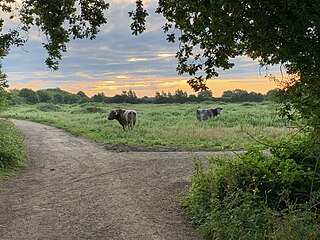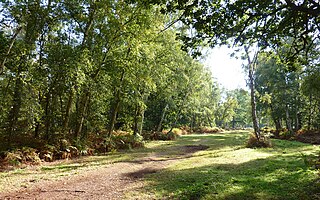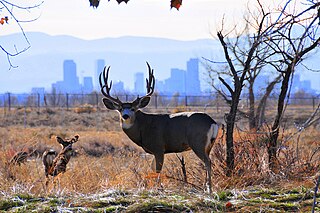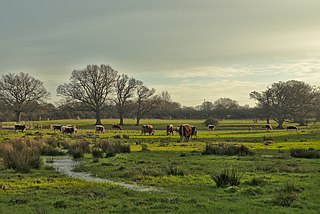 W
WRewilding, or re-wilding, activities are conservation efforts aimed at restoring and protecting natural processes and wilderness areas. This may include providing connectivity between such areas, and protecting or reintroducing apex predators and keystone species.
 W
WAlladale Wilderness Reserve is a 23,000-acre (93 km2) highland estate in the Scottish Highlands. The estate was purchased in 2003 by conservationist and philanthropist Paul Lister, who hopes to recreate a wooded landscape and reintroduce native animals including predators such as the Scottish wildcat and the wolf. It is now being managed as a privately-owned nature reserve that aims to promote biodiversity and associated tourism at the forefront of its mission. The idea of a wilderness reserve was inspired by Lister's visits to South Africa's ever popular game reserves, and to create an area of outstanding natural beauty, where a pack of European wolves could be released into a controlled reserve. This has been proven in South Africa, when over-grazed farmland has been returned to a more natural state.
 W
WCeltic Reptile & Amphibian is a limited company, established by Harvey Tweats and Tom Whitehurst in 2020, with the aim of reintroducing extinct reptiles and amphibians back to rewilding projects within the UK. It is based in Leek, Staffordshire.
 W
WEnnerdale is a valley in Cumbria, England. Ennerdale Water, fed by the River Liza, is the most westerly lake in the Lake District National Park.
 W
WFeral is a book about rewilding by the British activist George Monbiot. It was published by Allen Lane in 2013 with the full title Feral: Searching for Enchantment on the Frontiers of Rewilding. The book has also been published as Feral: rewilding the land, sea and human life.
 W
WThe Great Fen is a habitat restoration project being undertaken on The Fens in the county of Cambridgeshire in the United Kingdom. It is one of the largest restoration projects in the country, and aims to create a 3,700 hectare wetland and aims to connect Woodwalton Fen National Nature Reserve (NNR), Holme Fen NNR and other nature reserves to create a larger site with conservation benefits for wildlife and socio-economic benefits for people.
 W
WIberá National Park is a national park in Argentina. It is located in central Corrientes Province. The park covers 1,381.4 km².
 W
WInvoluntary park is a neologism coined by science fiction author and environmentalist Bruce Sterling to describe previously inhabited areas that for environmental, economic, or political reasons have, in Sterling's words, "lost their value for technological instrumentalism" and been allowed to return to an overgrown, feral state.
 W
WKnepp Wildland is the first major lowland rewilding project in England. It comprises 1,400 hectares or 3,500 acres of former arable and dairy farmland in the grounds of Knepp Castle, in West Sussex, England. Since 2000 when the conversion from intensive agriculture started the land now supports an 'extraordinary abundance' of many rare species including turtle doves, barbastelle bats, slow-worms and grass snakes; it has become a major nesting site for nightingales; a breeding hotspot for purple emperor butterflies; the site of the first white stork chicks raised in the wild in England for 600 years, and is home to the first beavers living in the wild in Sussex for 400 years. On 17th November 2021 the very rare Vagrant Emperor dragonfly was discovered in Pond Field.
 W
WMadrid Río is an urban park in the Spanish capital Madrid, built along an urban stretch of the Manzanares River following the burial of the M-30 bypass road in this area. It is the result of a project led by the architect Ginés Garrido, who won the international ideas competition organised by the Madrid City Council in 2005 to redevelop the area.
 W
WMilovice Nature Reserve is a nature reserve next to the towns of Milovice and Benátky nad Jizerou in Nymburk District, Central Bohemian Region, Czech Republic. Established in 2015, the area is administered by the Česká krajina o.p.s. organization, as a part of Evropsky významná lokalita Milovice-Mladá CZ0214006 protected area, part of the European Union project Natura 2000. This reserve is a pioneering project of cooperation between several scientific bodies and draws support from many organizations and private sponsors.
 W
WThe Oostvaardersplassen is a nature reserve in the Netherlands, which is managed by the State Forestry Service. Covering about 56 square kilometres (22 sq mi), it is noted as an experiment of rewilding. It is in a polder which was created in 1968; by 1989, its ecological interest had resulted in its being declared a Ramsar wetland. It became part of Nieuw Land National Park when it was created in 2018.
 W
WPleistocene Park is a nature reserve on the Kolyma River south of Chersky in the Sakha Republic, Russia, in northeastern Siberia, where an attempt is being made to re-create the northern subarctic steppe grassland ecosystem that flourished in the area during the last glacial period.
 W
WRewilding Britain is an organisation founded in 2015 that aims to promote the rewilding of Great Britain. It is a registered charity in England and Wales, and also in Scotland.
 W
WThe Rocky Mountain Arsenal National Wildlife Refuge is a 15,988-acre (24.981 sq mi) National Wildlife Refuge located adjacent to Commerce City, Colorado, in the United States. It is approximately 8 miles (13 km) northeast of downtown Denver. The refuge is on the grounds of the former Rocky Mountain Arsenal, a United States Army chemical weapons manufacturing facility. The site was designated a national wildlife refuge in 1992 by the United States Congress, and underwent a costly environmental cleanup in order to remove pollutants. The refuge is managed by the United States Fish and Wildlife Service. More than 330 species of wildlife inhabit the refuge, including raptors, deer, raccoons, coyotes, white pelicans, black-footed ferrets, black-tailed prairie dogs, and bison.
 W
WWild Field is a 300 ha nature reserve near the city of Tula in Tula Oblast in the European part of Russia, approximately 250 km (150 mi) south of Moscow. It was established in 2012 by Russian scientists Sergey Zimov and Nikita Zimov as a companion to Pleistocene Park in Siberia.